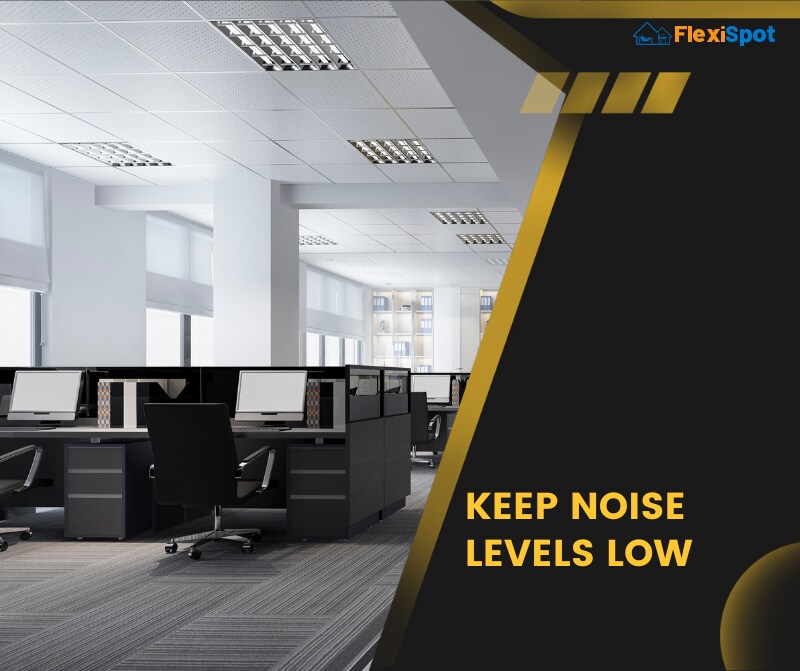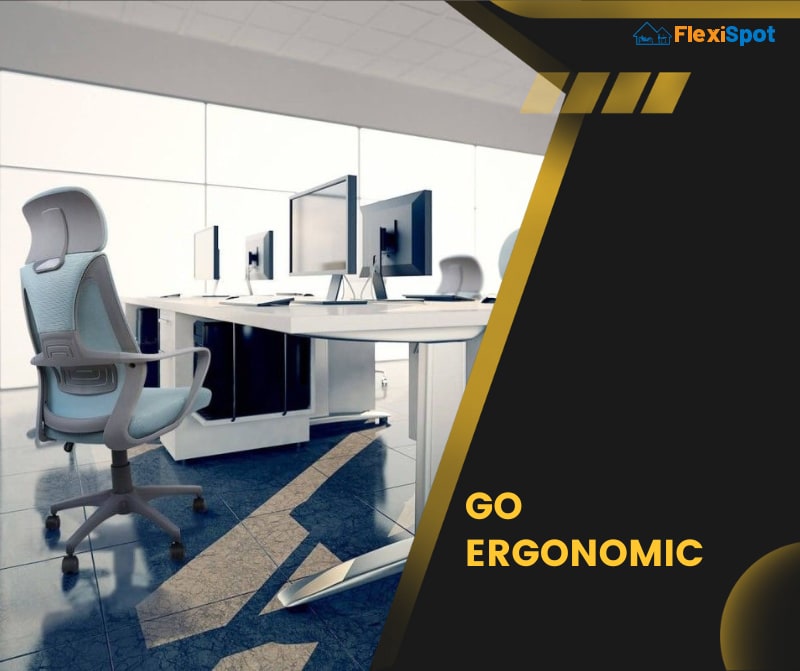Most businesses don’t invest enough time or resources into designing their office space. These are often the businesses that experience poor productivity and inefficient employee performance. Most business owners do not realize that how your office is laid out plays a critical role in affecting your employee’s productivity and creativity. A poorly designed office can foster a negative work atmosphere which eventually affects your employees’ output.
If your business is trying hard to improve employee performance and has tried everything to keep your employees motivated and efficient, then it may be time to get down to your office design. And if you are considering redesigning your office, then you should know about common office design pitfalls that you should avoid, so you end up with a working space that boosts employees' morale and productivity.
Here are some tips from the experts on avoiding common office design mistakes.
Plan Purposefully
While “planning purposefully” makes a common achievement step, it still plays an integral role in avoiding office design mistakes. You need to ensure that you plan according to the space you have along with the design consideration. It maximizes the space utility while giving enough space for your employees so they can work comfortably and productively.
If you are not sure about how to go about the planning process, it is best to work with a team of seasoned architects who can help you make a great plan because only when you have a good design plan you will be able to translate it into a workplace that is space-optimized and makes a convenient workspace for the employees.
Plan Ahead
And while it is integral to plan purposefully, it is also important to plan ahead because it takes a lot of time when it comes to redesigning your office. One of the common office design mistakes to avoid is to start planning ahead. It is especially true if you plan to hire a designer or an architect, as you will need to schedule and reschedule consecutive meetings that allow for creative brainstorming, effective consultation, and some great decision-making for your new office design.
When you start the planning process too late, it can lead to costly mistakes. It is always recommended to provide more time for back-and-forth meetings with the designer and proper consultations, which eventually results in better proposals, and, ultimately, a well-designed office.
Moreover, as you plan ahead, assign a project manager who can work with the design team to ensure that you get the design results you look forward to. Often businesses assign a staff member from the organization to collaborate with the designer who is already too busy that they don’t have enough time to repeatedly discuss the proposal. Having a dedicated project manager by the employer who can coordinate with the design team and has the authority to make decisions can make the process smoother and easier for everyone, but you can only do so if you plan for your office redesign ahead of time.
Free Up the Corners
In most offices, the corner space that gets the most natural sunlight and views are often dedicated to the conference rooms or private spaces for senior management.
If your existing office has a similar design, now is the time to redesign your office such that you free up the corner spaces of your office. Instead of designating corner spaces for conference rooms or private rooms, use the space to prepare multi-purpose workstations for your employees.
Remember, boardrooms and private offices located around the corners block access to the views and natural light for the rest of the office space. When you shift the private office towards the center, these spaces can still borrow natural light across the workstation area.
By freeing up your corners, you can ensure that all or most of the employees get access to the view and natural light, which is known to positively affect employee focus and productivity.
Keep Noise Levels Low
One of the common design mistakes that most employers make when redesigning their office is considering the noise level. Often noise is the last thing you would want to think about but let’s not forget that sound is critical when it comes to your office design.
In fact, sound becomes more critical, especially in office space which is why it is integral to keep the noise levels low when redesigning your office. If you are looking for ways to keep noise levels low, make sure you rely on the use of acoustic materials, which makes a huge difference in how efficiently your workforce can work in a space within a comfort level.
Apart from using acoustic materials, you will also need to identify ways to reduce extra noise from other employees as well as the equipment. To keep the noise levels at a minimum, you can choose the flooring that absorbs sound, like the use of rugs or carpets. Moreover, the use of upholstered furnishings and wall panels to dampen sound are also some of the measures that you can try to keep noise levels low.
Go Ergonomic
You can also avoid common office design pitfalls by becoming an ergonomic workspace. By creating an ergonomic workspace for your employees, you can enjoy the following benefits.
Increased employee productivity,
Healthier employees,
Lesser absenteeism due to musculoskeletal concerns,
Better quality of work, and
Improved employee satisfaction
One of the most effective ways to improve your office ergonomics is investing in the right ergonomic office furniture. From ergonomically-designed office chairs to traditional and height-adjustable desks, monitor mounts, and adequate lighting, you can find several ergonomic solutions that can help you design your office adequately to boost your employee's productivity.
If your office setup is such that it requires employees to sit for prolonged hours and work on screen, then ergonomic office chairs make the most critical piece of ergonomic office furniture for your workspace. You can find several varieties of ergonomic office chairs made from different materials such as breathable mesh or leather, so you can invest in the one that best suits your office needs and your workspace design. Different ergonomic office chairs also have varying features such as height and seat depth adjustability along with features such as adjustments of the armrests and varying recline so you can choose the one that best suits the needs of your employees.
One of the most reliable office chairs available is the Ergonomic Office Chair OC7. The ergonomic office chair comes from the reliable manufacturer of ergonomic office products, Flexispot, a brand with a reputation that speaks for itself. The strong and sturdy ergonomic office chair is made from top-quality breathable mesh that wicks away moisture and sweat and will keep the users comfortable throughout the year.
The ergonomic chair features an adjustable headrest that can be adjusted to support your neck and head fully. Moreover, the chair is ergonomically designed to help you maintain the natural curvature of your spine. The chair also allows you to adjust the seat height by over 3" so you can freely adjust the height of your chair depending upon your height.
The stable and comfortable ergonomic office chair moves smoothly with you as it comes with wheels that can rotate 360. The sturdy ergonomic chair is available in two colors. To learn more about Ergonomic Office Chair OC7 and other ergonomic office products, visit the Flexispot website.
Get Flexible
Another one on the list of common office design pitfalls is to get an idea from another organization and try to implement it in your workspace as it is. Remember, it is easy to have a corner that looks exactly like in Company X but let's not forget that you are not "Company X." Every organization is different, so is their need for office design so to implement something new just because you have seen it somewhere else may not always be a good idea. A better alternative is to get flexible. Take a step back and ask yourself why you are making the change to the design and what you hope to accomplish. You may look for ideas and inspirations, but don't forget to change them accordingly to fit in best with your organization.
Final Words
Your office layout and design are key determinants of your employee's performance at work. When you consider redesigning your office, make sure you avoid common office design pitfalls by planning purposefully and, planning well in time, and realizing that each office is different, so is the design need for each working space.







